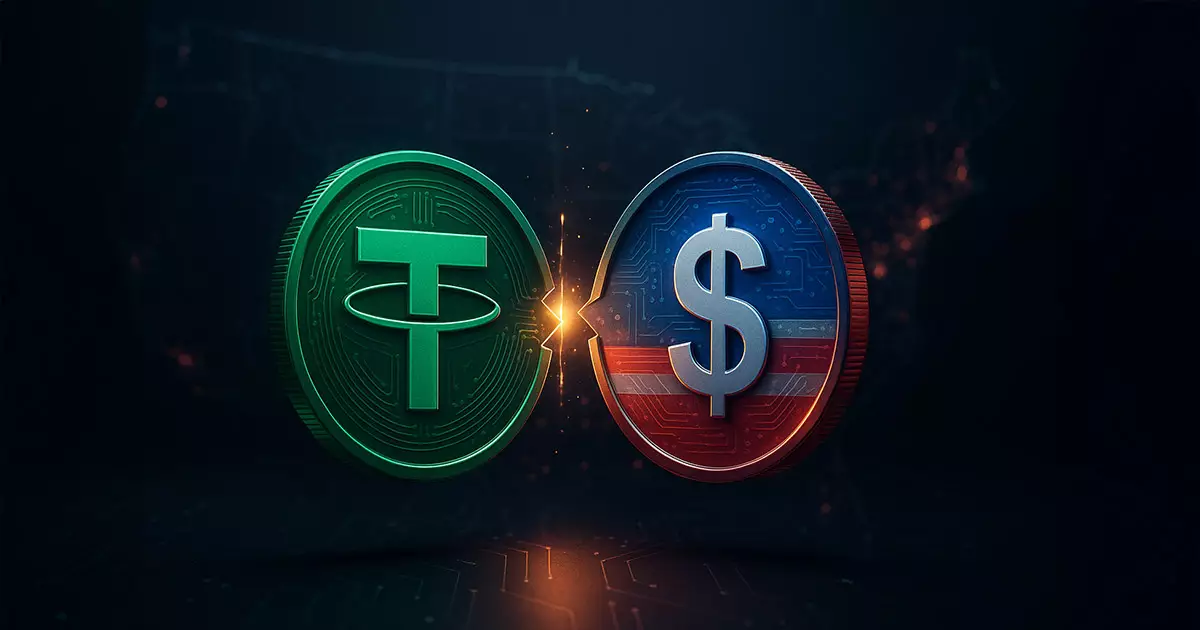In a notable shift within the cryptocurrency landscape, Tether’s CEO Paolo Ardoino recently communicated an ambitious vision for a U.S.-issued stablecoin tailored to domestic needs. This revelation comes as the United States Congress considers the Guiding and Establishing National Innovation for US Stablecoins Act (GENIUS Act), which aims to regulate the burgeoning stablecoin market with an emphasis on consumer protection and financial stability. While many blockchain enthusiasts are buoyed by this potential evolution, there are critical viewpoints to consider. The U.S. market’s unique characteristics necessitate a stablecoin that performs distinct functions compared to its counterparts in emerging economies, where USDT currently thrives.
Challenging the Status Quo
Tether’s international focus has primarily centered around emerging markets, where an estimated 1.4 billion adults remain unbanked. In contrast, Ardoino emphasizes that the needs of the U.S. market are different; complexities of domestic financial networks mean that a one-size-fits-all approach may not suffice. By concurrently focusing on creating a domestic stablecoin, Tether is challenging the traditional banking structures and striving to remain relevant in an ever-evolving financial landscape.
In essence, the landscape of cryptocurrency is shifting. Ardoino’s remarks suggest that Tether recognizes the limitations of its existing product in the U.S., where competition includes a plethora of payment processing methods. The need for flexibility and innovation in any forthcoming U.S. stablecoin is paramount.
Democratizing Finance for the Unbanked
With Tether claiming to serve over 420 million users in developing countries, the mission of providing financial access to the unbanked is fundamentally noble. Ardoino has pointed out that individuals in these countries—grappling with currency instability—rely on USDT not merely for transactions, but as a mechanism for preserving savings. However, while it’s laudable to champion global financial inclusion, one must ask whether a domestic stablecoin can genuinely address the needs of U.S. consumers or simply end up as another tool for speculation.
The juxtaposition between serving the unbanked in emerging markets and the financially literate U.S. citizen cannot be overstated. Although Tether promises innovation with a component that tailors the new stablecoin to meet U.S. regulations effectively, the success of such an endeavor will depend on how intuitively it serves real-world financial needs rather than speculative challenges.
Navigating Regulatory Waters
Regulatory compliance remains a hot button in the cryptocurrency narrative. Ardoino has expressed optimism about the GENIUS Act, highlighting its favorable aspects compared to Europe’s MiCA regulation. The requirement to hold 100% of reserves in cash equivalents, primarily U.S. Treasuries, aligns well with traditional financial prudence. In contrast, Ardoino criticizes European standards for creating unnecessary hurdles that choke innovation.
However, there remains skepticism about whether the U.S. Treasury and other regulatory bodies can strike the right balance between fostering innovation and ensuring consumer safety. A circumvention of reasonable regulatory frameworks could lead to instability, ultimately undermining consumer trust. Thus, Tether’s commitment to compliance is welcome, but also places it in a tightrope dance that could dictate whether its domestic stablecoin flourishes or falters.
The Future of Digital Currency
As Tether positions itself for potential growth in the U.S. market, it finds itself at a crossroads—balancing the needs of emerging economies while developing a competitive product for a sophisticated domestic audience. The ambition for a tailored U.S. stablecoin indicates a recognition that digital currency is far more than a tool for speculation; it is an avenue for creating financial systems that can potentially empower individuals and businesses alike.
Nevertheless, to truly implement this vision expeditiously, Tether must not only build a compliant but also intuitive product. Future successes can hinge on creating a stablecoin that resonates with consumers through functionality as well as security. As the U.S. prepares for what could be monumental changes in its financial landscape, all eyes will be watching to see if Tether can indeed offer a solution that is not just compliant but transformative.


Leave a Reply